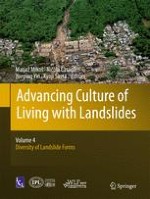2017 | OriginalPaper | Chapter
Frequency Difference of Debris Flows in Moxi Basin, Southwestern China
Authors : Yongbo Tie, Jintao Jiang, Zhi Song, Alena V. Kadetova, Artem A. Rybchenko
Published in: Advancing Culture of Living with Landslides
Publisher: Springer International Publishing
Activate our intelligent search to find suitable subject content or patents.
Select sections of text to find matching patents with Artificial Intelligence. powered by
Select sections of text to find additional relevant content using AI-assisted search. powered by
